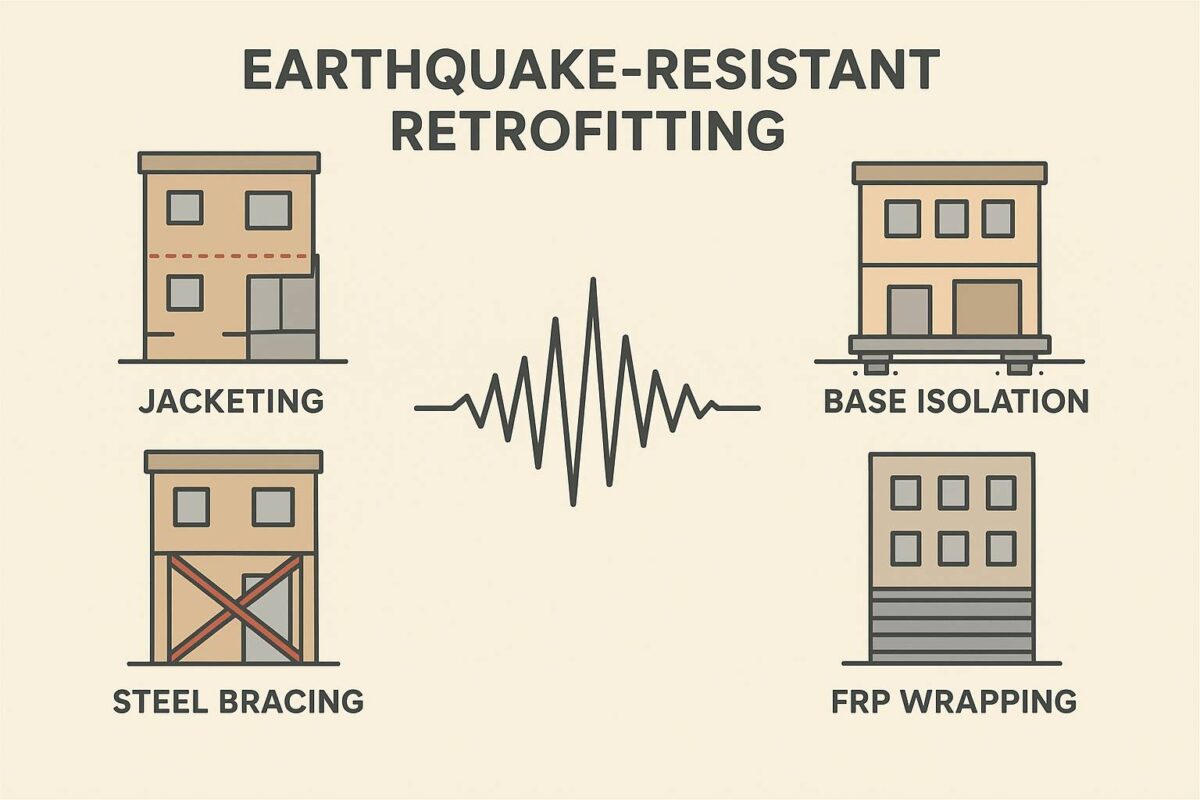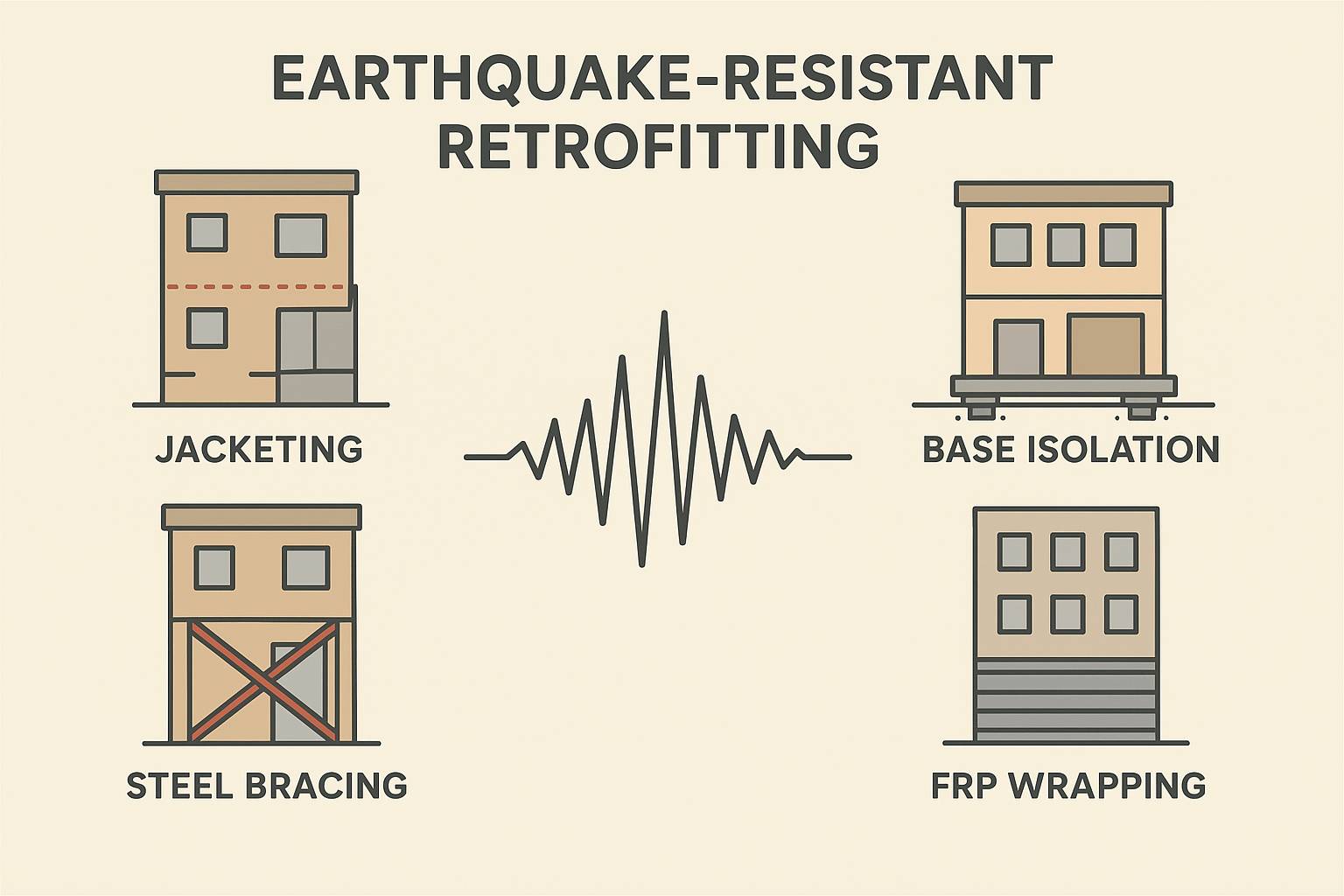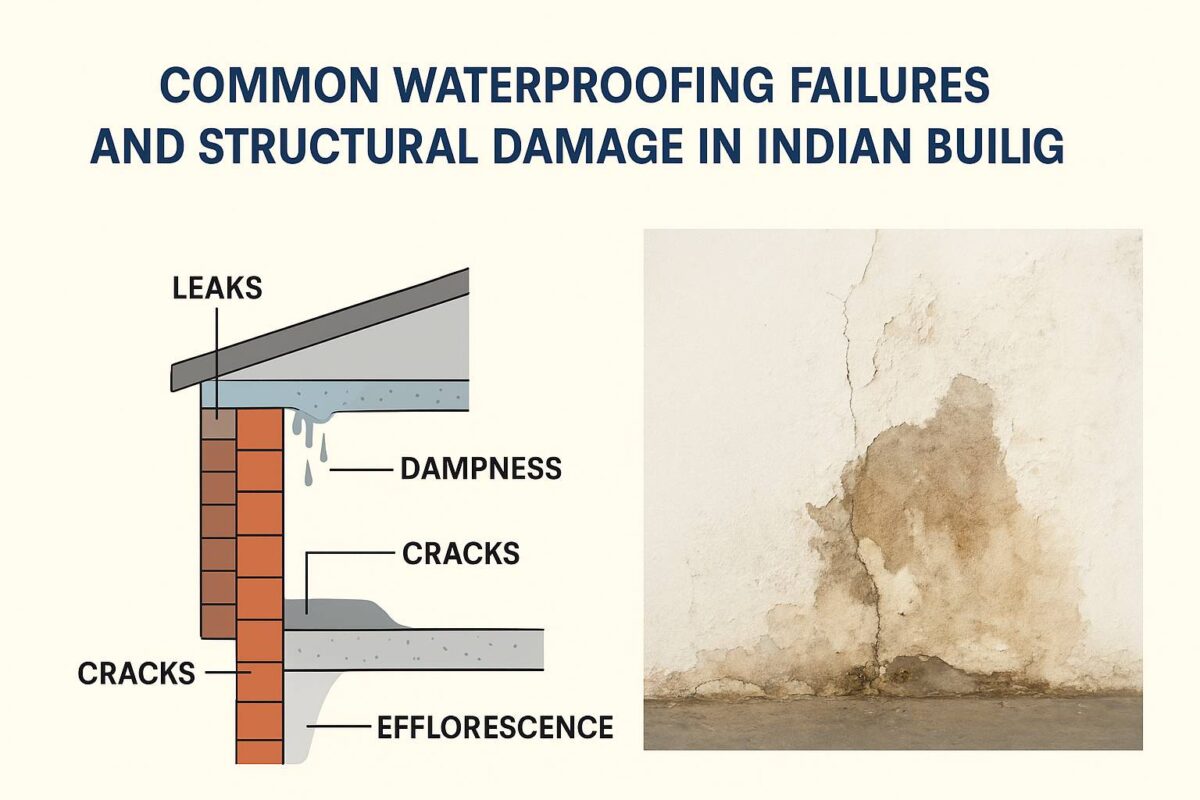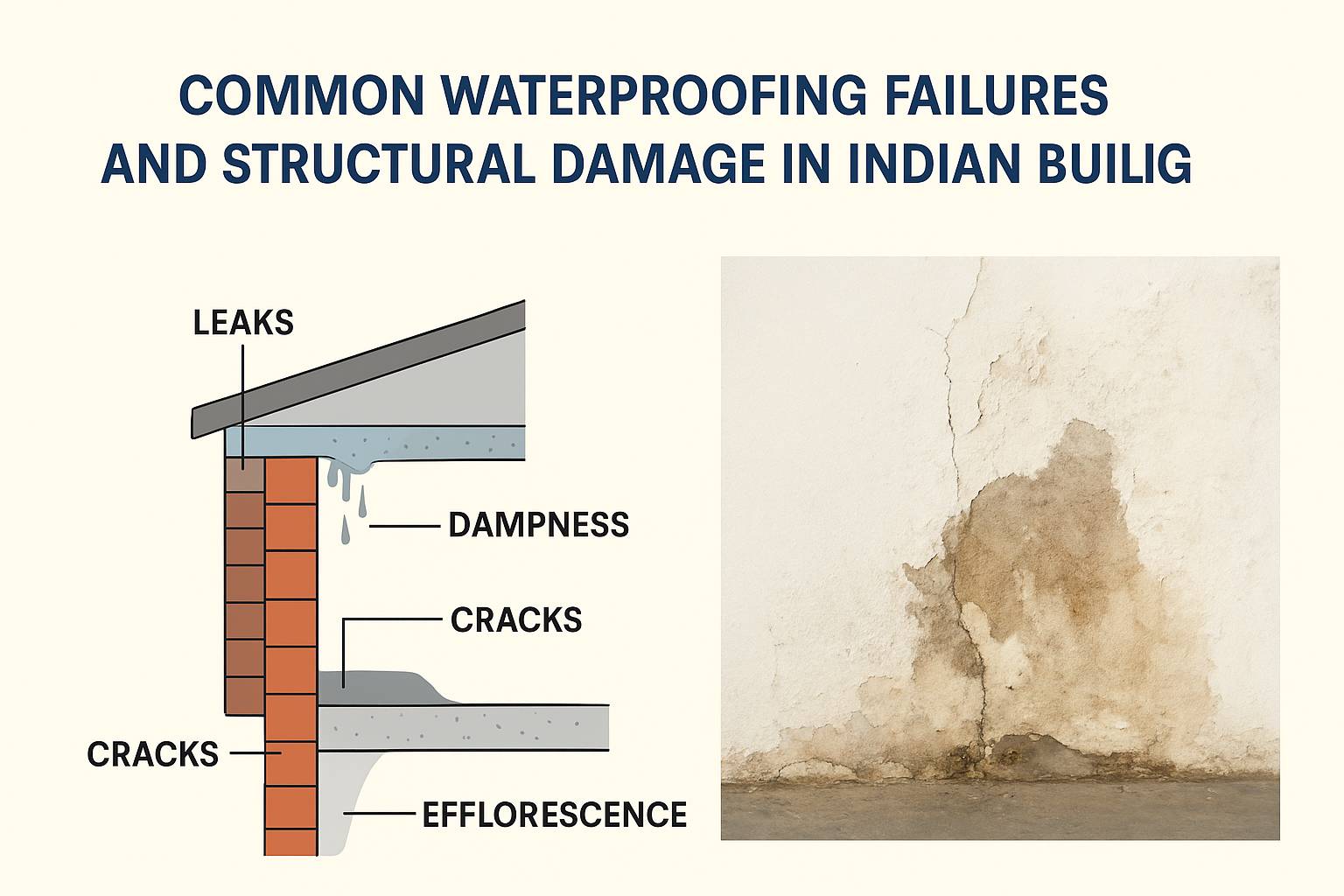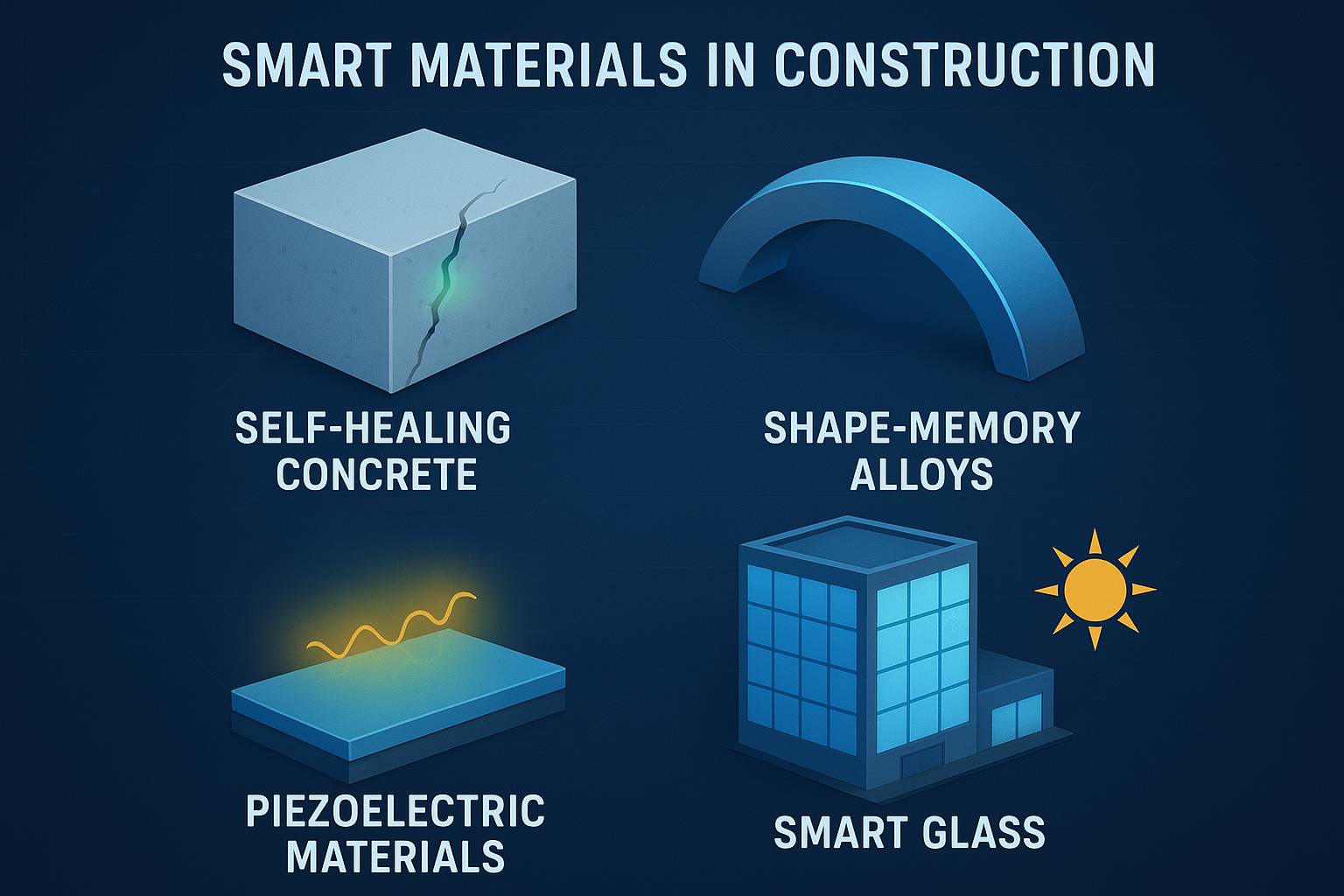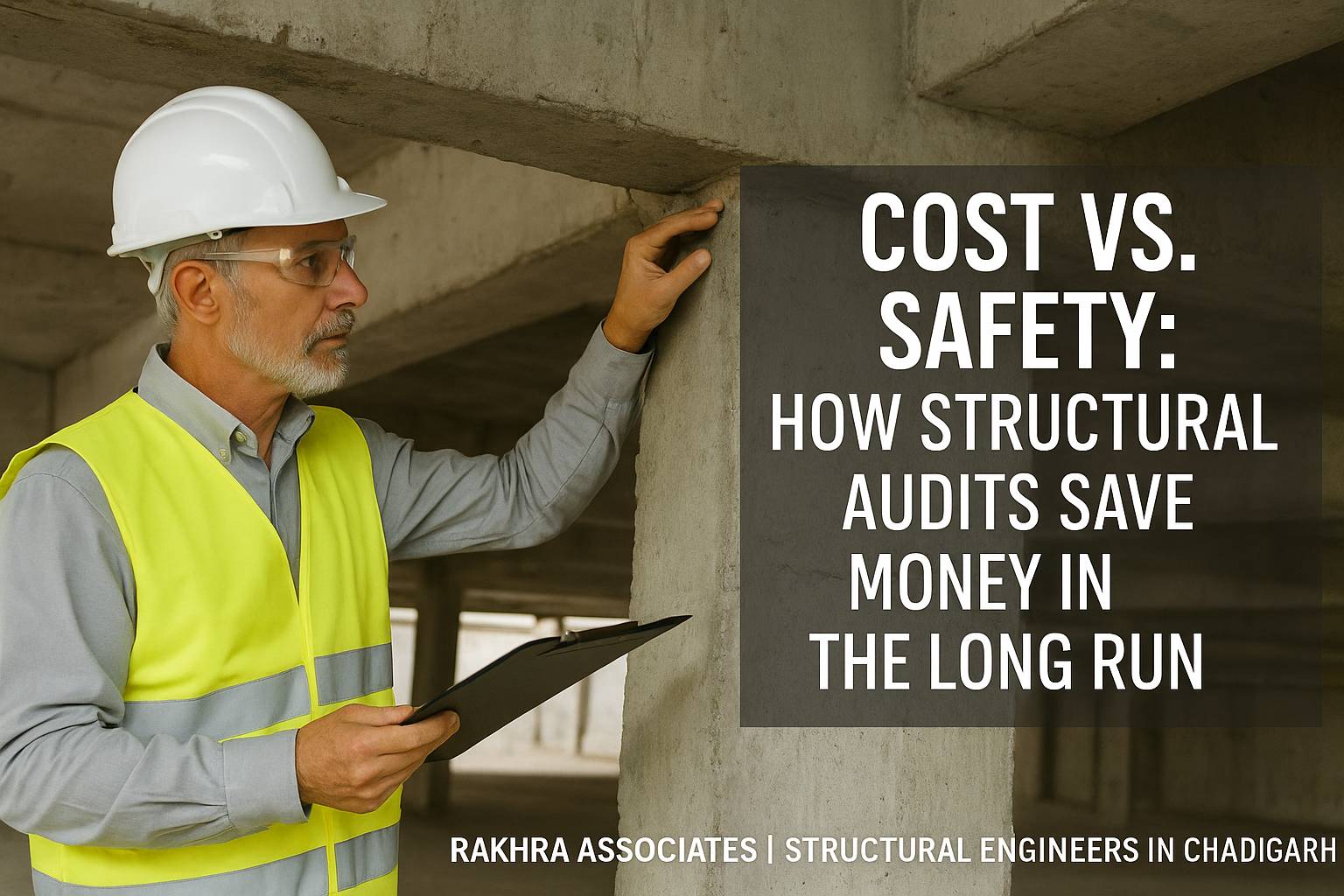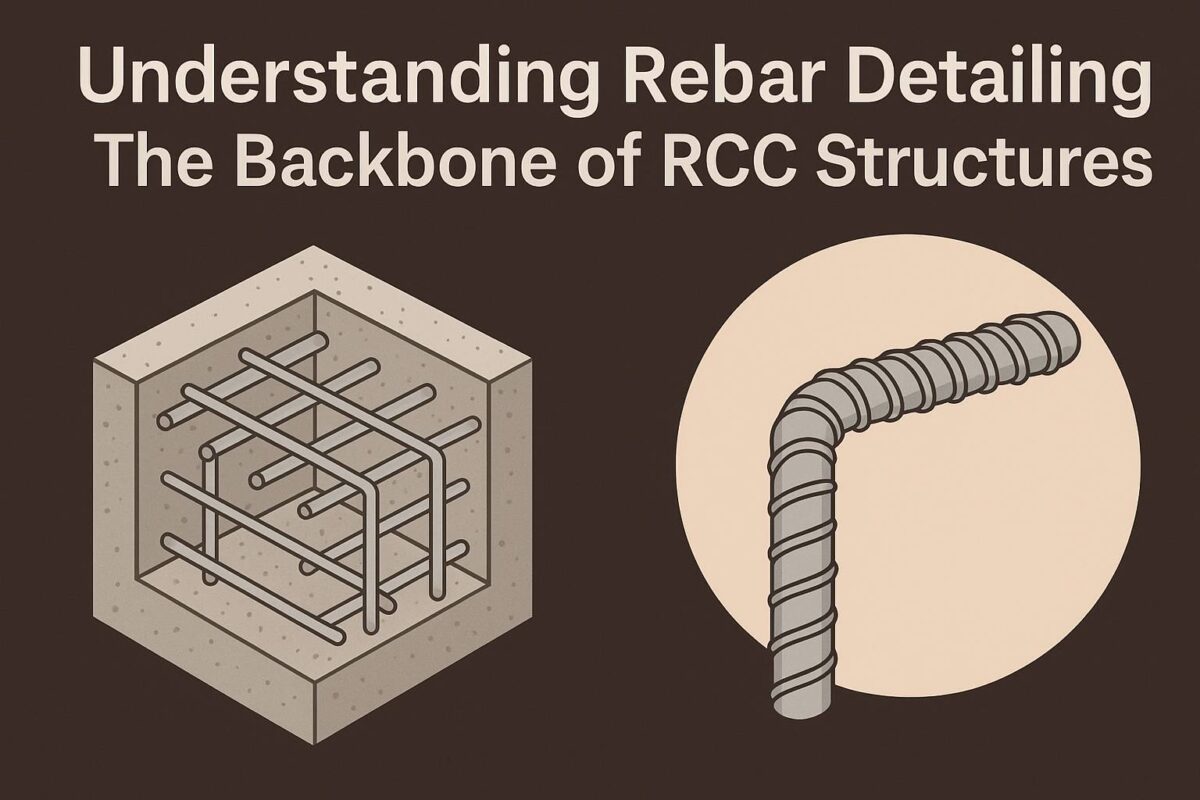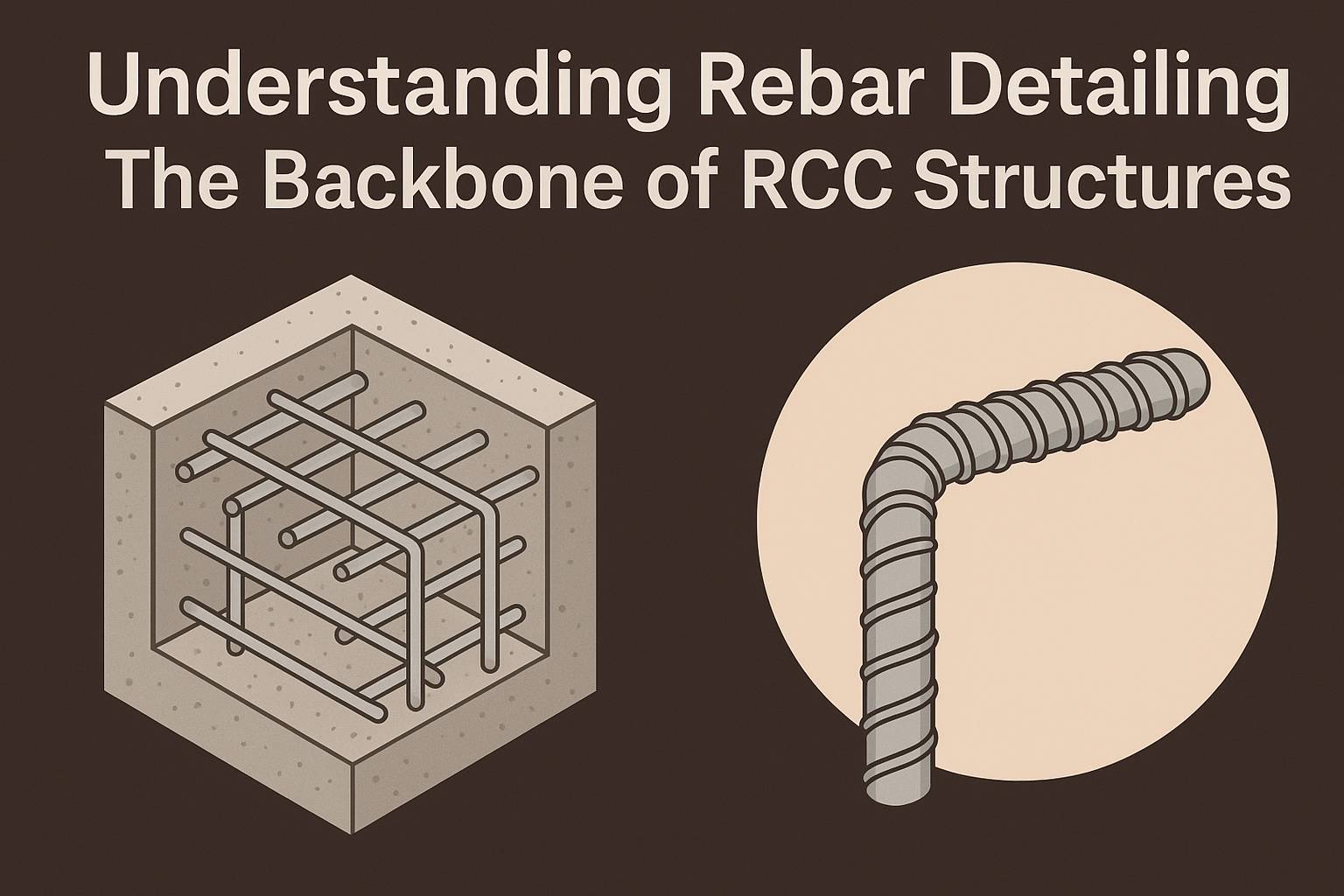Blog
Structural Proof Checking: Why Every Project Needs an Independent Expert Review
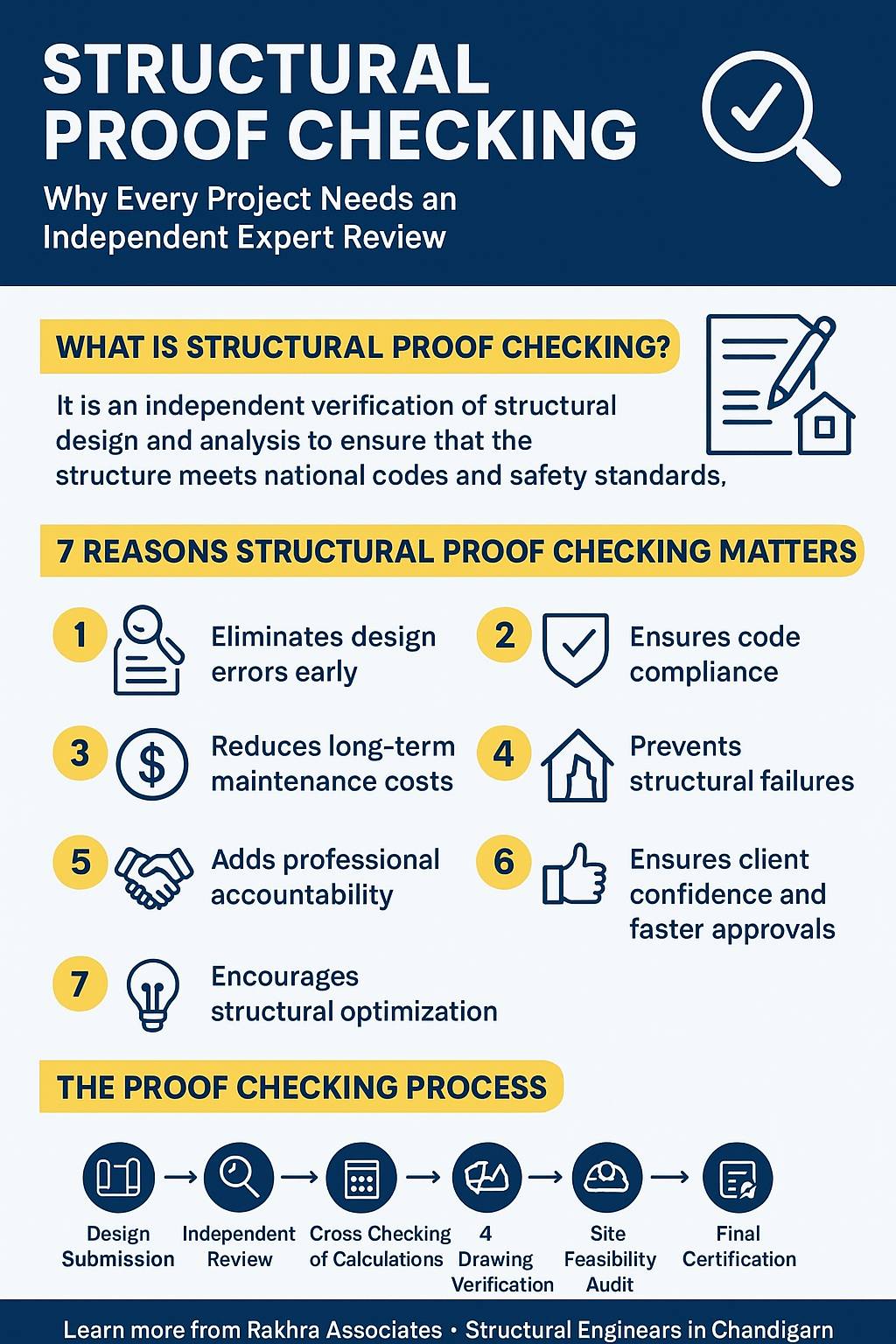
Introduction: The Hidden Guardian of Structural Safety
Behind every skyscraper, bridge, or industrial shed lies a complex network of design calculations, material specifications, and safety checks. Yet, even the most seasoned structural engineers can overlook subtle errors due to workload, time constraints, or human oversight.
This is where structural proof checking plays a life-saving role.
It’s the process of having an independent structural engineer or consultancy review design drawings, calculations, and assumptions made by the primary designer. For firms like Rakhra Associates, based in Chandigarh, proof checking ensures that buildings stand strong — both on paper and in reality.
What is Structural Proof Checking?
Structural Proof Checking is an independent verification of structural design and analysis to ensure that the structure:
- Meets national codes and safety standards
- Is optimized for load, material, and cost efficiency
- Eliminates design errors before construction begins
This process is mandatory for public infrastructure, institutional, and government projects, as per guidelines by CPWD, PWD, and BIS.
Why Proof Checking Matters More Than Ever
1. Eliminates Design Errors Early
Even a small miscalculation in load paths or reinforcement detailing can cause:
- Structural cracks
- Uneven settlement
- Catastrophic failures
Independent proof checkers use advanced tools like STAAD.Pro, ETABS, and Tekla to cross-verify calculations and detect inconsistencies early.
2. Ensures Code Compliance
Every structure must comply with the Bureau of Indian Standards (BIS) design codes such as:
- IS 456:2000 – RCC Design
- IS 800:2007 – Steel Design
- IS 875 (Part 1–5):1987 – Load Calculations
- IS 1893:2016 – Earthquake Resistance
- IS 3370:2009 – Liquid Retaining Structures
Proof checking ensures zero deviation from these standards — a must for project approvals and safety audits.
3. Reduces Long-Term Maintenance Costs
Errors in design often lead to higher maintenance and retrofitting costs later.
Proof checking:
- Identifies over- or under-designed sections
- Suggests cost-effective alternatives
- Improves service life and structural durability
In short, a little extra time in review can save years of repair.
4. Prevents Structural Failures
From flyover collapses to roof failures, design errors have been root causes of many tragedies.
Independent review ensures:
- Redundancy in load paths
- Safety under extreme wind or seismic conditions
- Proper reinforcement detailing
A second expert opinion can literally save lives.
5. Adds Professional Accountability
When two independent engineering teams collaborate on the same design, it ensures transparency, credibility, and shared responsibility.
Proof checking is not criticism — it’s collaboration for safety.
6. Ensures Client Confidence and Faster Approvals
For clients and government departments, proof checking:
- Builds trust in the design integrity
- Eases project approval from authorities like Municipal Corporations, Smart City Missions, and RERA
- Improves project documentation and traceability
Rakhra Associates provides digitally verified proof-checking reports, accelerating the approval workflow for Chandigarh-based projects.
7. Encourages Structural Optimization
Proof checking isn’t only about finding mistakes — it also promotes design optimization.
Independent reviewers often suggest:
- Better load distribution systems
- Efficient column-beam alignment
- Lighter yet safer steel or RCC configurations
This leads to reduced material use, saving up to 10–15% in cost without compromising safety.
The Proof Checking Process: Step-by-Step
| Stage | Activity | Performed By |
| 1. Design Submission | Structural drawings, models, and reports submitted by design consultant | Design Engineer |
| 2. Independent Review | Verification of design assumptions, loading criteria, and code compliance | Proof Consultant |
| 3. Cross-Checking of Calculations | Review of manual and software calculations | Structural Reviewer |
| 4. Drawing Verification | Checking rebar details, load paths, and connections | Structural Checker |
| 5. Site Feasibility Audit | Matching design intent with actual site conditions | Proof Engineer |
| 6. Final Certification | Issuance of proof-checking certificate for authorities | Authorized Proof Checker |
Rakhra Associates follows a stringent 6-stage quality verification protocol to ensure absolute design reliability.
Who Requires Structural Proof Checking in India?
- Government and Public Infrastructure Projects (CPWD, PWD, MES, NHAI)
- Institutional Buildings – Schools, colleges, hospitals
- High-rise Buildings and Apartments
- Industrial Sheds and PEB Structures
- Commercial Complexes and Malls
- Heritage Structures undergoing retrofitting
Even private developers in Chandigarh, Mohali, and Panchkula increasingly seek proof checking for insurance and RERA compliance.
Key Benefits of Independent Proof Checking
| Aspect | Without Proof Checking | With Proof Checking |
| Safety | Prone to hidden errors | Verified for stability |
| Cost | Possible overdesign or underdesign | Optimized material use |
| Approval | Delays in authority clearance | Faster compliance certification |
| Longevity | Reduced service life | Extended durability |
| Accountability | Single-point responsibility | Dual expert validation |
Case Example: Structural Review Saves Time and Cost
In a recent industrial project in Punjab, Rakhra Associates performed proof checking of a 4,000 sq. m. steel structure.
Findings included:
- Overdesigned trusses leading to excess steel use (~18%)
- Missing bracing connections compromising lateral stability
- Revised design saved ₹12 lakhs and improved safety margins
The project achieved both cost-efficiency and IS code compliance — showcasing the tangible value of proof checking.
Role of Rakhra Associates in Structural Proof Checking
As a leading structural consultancy in Chandigarh, Rakhra Associates provides:
- Comprehensive proof checking services for RCC, steel, and composite structures
- Detailed design verification reports with corrective recommendations
- Seismic and wind load validations using advanced software
- Value engineering suggestions to improve cost-performance ratio
Their clients include government departments, private developers, and architects across North India.
When Should Proof Checking Be Conducted?
- Before Construction Begins: To verify design accuracy
- During Design Stage: To correct miscalculations early
- Post Structural Audit: For old or retrofitted buildings
- Before Tendering: To finalize BOQs and specifications
Early involvement ensures smoother project flow and risk-free execution.
Common Mistakes Found During Proof Checking
- Ignoring lateral load combinations in high-rises
- Incorrect modeling of slab-to-beam connections
- Neglecting foundation settlement in soil design
- Overlooking ductile detailing in seismic zones
- Misalignment between architectural and structural drawings
Each of these can lead to delays, rework, or structural distress — all preventable through expert review.
FAQs on Structural Proof Checking
Q1. What’s the difference between design checking and proof checking?
Design checking is internal; proof checking is an independent third-party review ensuring unbiased verification.
Q2. Is proof checking mandatory for private buildings?
Not legally mandatory for all, but strongly recommended for multi-storey and high-risk structures.
Q3. How long does the proof-checking process take?
Typically 5–10 working days, depending on complexity and documentation.
Q4. What documents are needed for proof checking?
Structural drawings, design reports, STAAD/ETABS files, and soil investigation reports.
Q5. Can proof checking reduce project cost?
Yes — by identifying overdesign, material wastage, and suggesting optimized alternatives.
Q6. Who can perform proof checking?
Licensed and experienced structural engineers or firms with government accreditation, like Rakhra Associates.
Conclusion: The Silent Safety Net of Engineering
In construction, the cost of a mistake is always higher than the cost of prevention.
Structural proof checking serves as the final line of defense between design and disaster.
By engaging experts like Rakhra Associates, project owners not only secure their structures but also gain peace of mind — knowing that every calculation, beam, and joint has been validated by trusted professionals.



